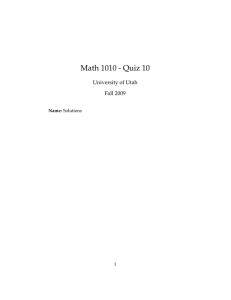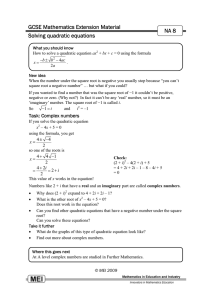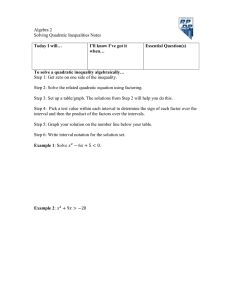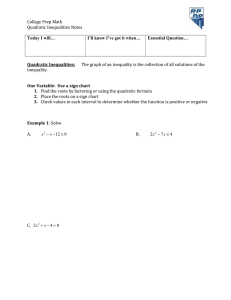Precalculus Review Material Solving quadratic equations Recall that
advertisement
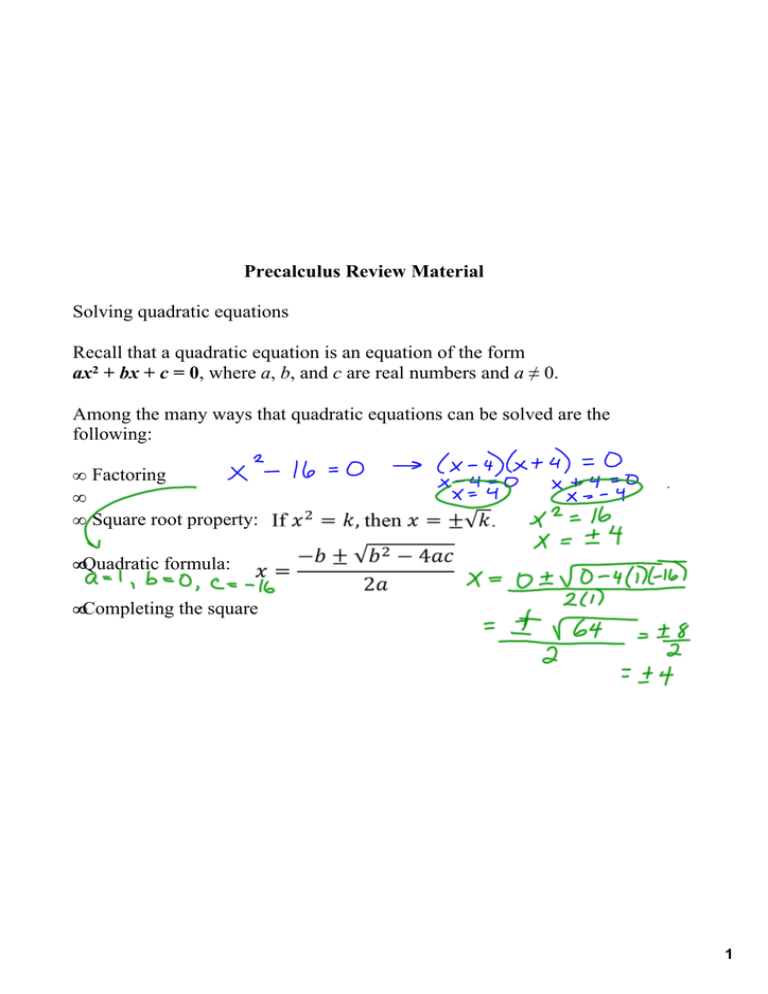
Precalculus Review Material Solving quadratic equations Recall that a quadratic equation is an equation of the form ax2 + bx + c = 0, where a, b, and c are real numbers and a ≠ 0. Among the many ways that quadratic equations can be solved are the following: • Factoring • • Square root property: • Quadratic formula: • Completing the square 1 Recall that quadratic equations may have two real solutions, one repeated real solution, or no real solutions (two imaginary solutions). When using the quadratic formula, the radicand (b2 ­ 4ac) determines the nature of the solutions. If it is positive, there are two real solutions, if it is 0, there is one repeated real solution, and if it is negative, there are two imaginary solutions. Examples: 2 3 4 The last example did not start out as a quadratic equation, but after we eliminated the fractions, it became a quadratic equation. This can also happen in certain radical equations, such as the examples below. The strategy for solving a radical equation is to eliminate the radical(s) and then solve the resulting equation. 5 Solving simple and compound linear inequalities: To solve a simple linear inequality, simply isolate the variable on one side, keeping in mind that if both sides of the inequality are multiplied or divided by a negative number, the inequality symbol must be reversed. To solve a compound linear inequality, isolate the variable in the middle. Examples: 6

